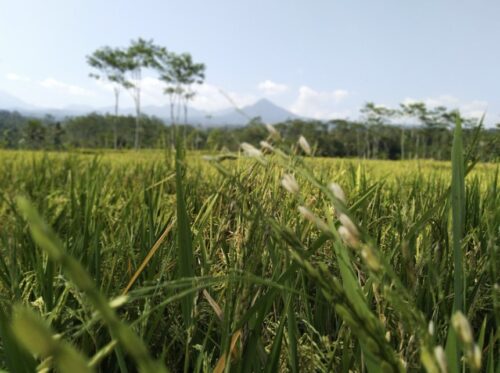Changes in monsoon winds can mean life or death for migrating insects. From Scope, the blog of the Yale Scientific Magazine.
Animal migration is an energy-draining and risky journey, yet it remains an important ecological strategy for countless insect species in the Northern Hemisphere, allowing them to access suitable environments and sustain future generations. However, with climate change causing rising temperatures and unpredictable weather, could the trillions of insects that depend on seasonal winds for migration be at risk? A study conducted by researchers at the Nanjing Agricultural University investigated this pressing question.
In the study, the researchers investigated the rice leafroller (RLR) moth’s (Cnaphalocrocis medinalis) migratory behavior and population dynamics along the East Asian Insect Flyway (EAIF), which is the largest and most diverse insect flight path in the world. The EAIF is driven by the East Asian monsoon, producing consistent winds that blow northward in the spring and summer, and southward in the fall.
“The rice leaf roller is a very important rice pest in China, and we have long-term monitoring data to investigate this [species],” Gao Hu, principle investigator of the study, said. The long-term data Hu referred to consisted of a twenty-four-year dataset from thirty-one insect monitoring stations in the Lower Yangtze River Valley (LYRV) region of China.
The researchers divided the dataset into two twelve-year periods: Period I (2000–2011) and Period II (2012–2023). From this field-survey data, researchers found the population densities of RLR moths decreased from 16,690 to 7,785 moths per hectare between Period I and Period II, but interestingly, they observed a shift in the highest density from mid-August to early September.
Surprisingly, even though the RLR density dropped in Period II, the number of moths caught in light traps actually increased compared to Period I. These light traps were set up across the LYRV and designed to track moths in the LYRV, including those immigrating to the region. Therefore, this unexpected increase in light-captured moths during Period II suggested that huge numbers were immigrating into the LYRV in early September, when they would normally be returning south again. If these moths were unable to return to lower-latitude breeding grounds and remained stuck in the LYRV, the long-term survival of the species could be threatened—what Hu refers to as an “ecological trap,” also known as the “Pied Piper effect.”
In the case of RLR moths, the rice crops are in their later stages during the period the moths are trapped in the region, which is suboptimal for insect development. “By August, the rice plants are aging, which is not good for moths. The cooler temperatures also aren’t favorable for RLR development,” Hu said. This paints a concerning picture: If RLR development is not supported, then these late-arriving moths will have few, if any, surviving offspring, posing a serious threat to their future survival.
Hu’s team then examined the potential link between the changing migration patterns of the RLR and wind pattern changes induced by climate change, which Hu hypothesized could help monitor and control the pest. The researchers analyzed wind patterns from RLR starting locations and found that between 2000 and 2004, late-season wind patterns were blowing toward the southwest. This helped the moths return south but made it harder for them to migrate north. However, between 2020 and 2023, winds had changed direction and were blowing from the north. These shifting wind patterns, Hu’s team found, were linked to delays and changes in the timing of the summer monsoon retreat in the LYRV that were caused by climate change.
Based on this finding, Hu’s team revealed that climate change-induced switches in wind direction during the late season were responsible for shifting the migration patterns of the RLR moth. This alarming link between climate change and RLR’s unexpected northward migration, coupled with the lack of suitable host plants, leaves RLR moths with little chance of future survival.
The findings from this study can potentially be extended to many other small insects that rely on seasonal wind patterns for migration. However, greater insight is needed. “We don’t have enough data to confirm this, as climate change may have better impacts on some species and negative effects for other species,” Hu said. Moving forward, the research team at the Nanjing Agricultural University plans to investigate how climate change may influence the migration patterns of additional insect species.

